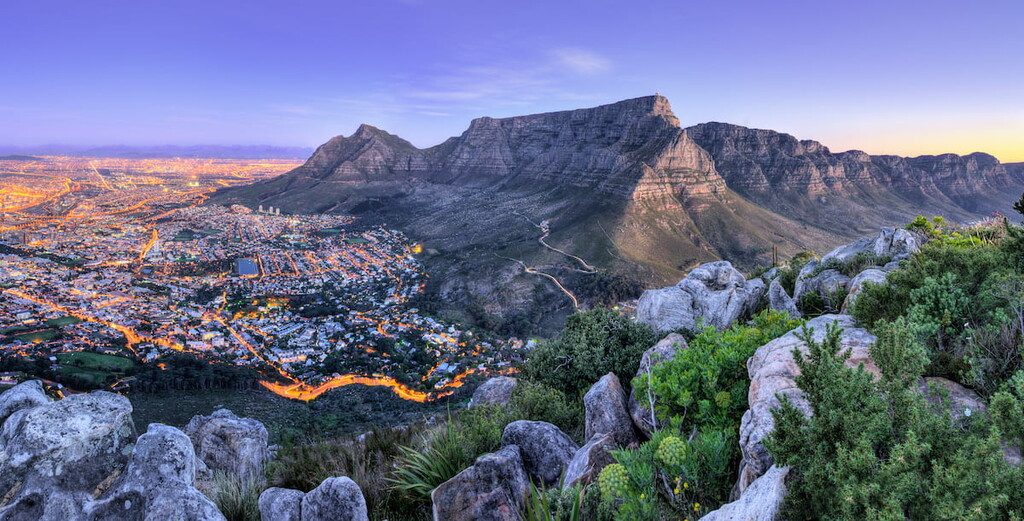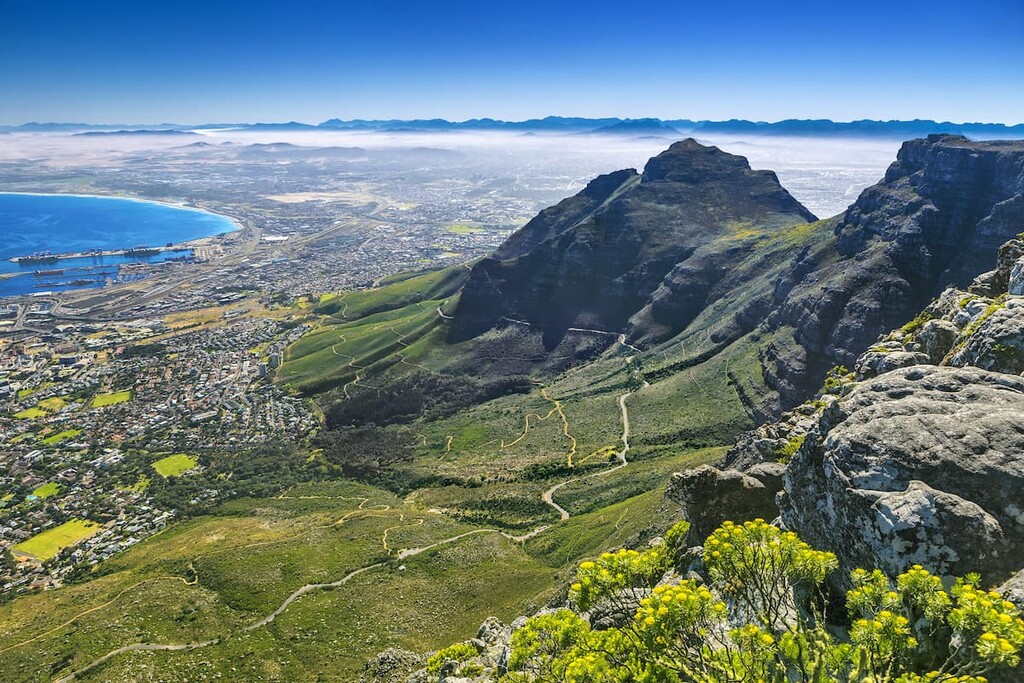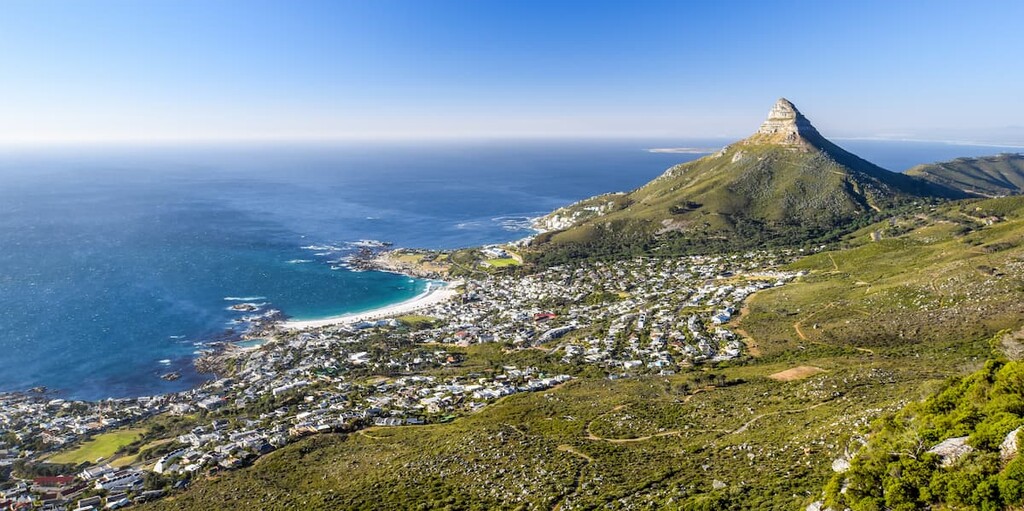Get PeakVisor App
Sign In
Search by GPS coordinates
- Latitude
- ° ' ''
- Longitude
- ° ' ''
- Units of Length

Yes
Cancel
Share ×

Scan the QR code and open PeakVisor on your phone
❤ Wishlist ×
Choose
Delete
Nestled at the southernmost tip of the African continent, Table Mountain National Park exemplifies South Africa’s raw beauty and ecological richness. The park encompasses 96 named peaks; Table Mountain (Maclear’s beacon) is the highest and most prominent. With its flat-topped summit, this 1,086-meter (3,563 ft) behemoth has become an enduring symbol of Cape Town in the Western Cape province.
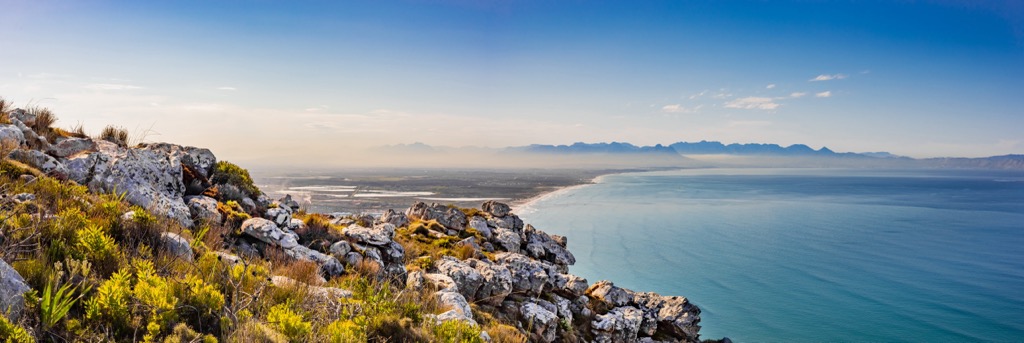
Table Mountain National Park stretches southward from Signal Hill along the Atlantic coastline into the Cape Peninsula, spanning 22,100 ha (52,610 ac). Two celebrated landmarks fall within the park's boundaries: Table Mountain and the Cape of Good Hope.
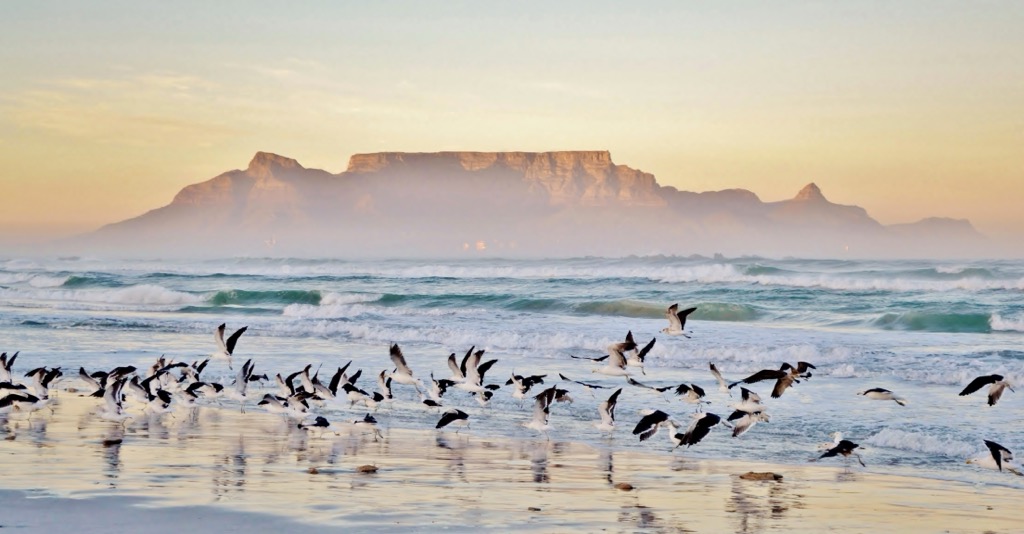
Table Mountain, which really is as flat as a table, stands at the park’s center and is renowned for its distinctive shape and breathtaking panoramic views of Cape Town and the Atlantic Ocean. Formed over millions of years through the forces of erosion and tectonic activity, Table Mountain is a symbol of resilience and natural beauty. Surrounding Table Mountain are other prominent peaks, such as Devils Peak, Constantiaberg, and Lion’s Head.
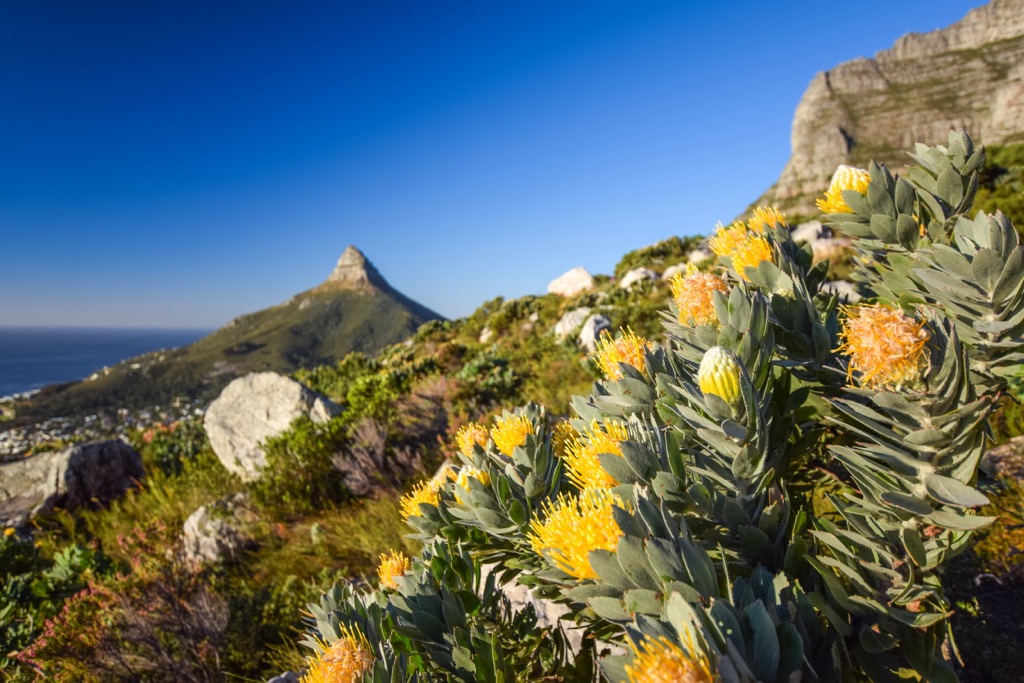
As the park extends towards the Cape of Good Hope, rocky cliffs give way to lush valleys, and towering peaks gradually transform into scenic bays. This dramatic geographical transition provides a habitat for an astonishing variety of plant and animal species, many of which are endemic, meaning they are found nowhere else on Earth.
One of the biodiversity hotspots is the Fynbos ecoregion, which translates as ‘fine bush,’ an intricate mix of shrubs, grasses, and flowering plants. The Fynbos hosts up to 9,000 vascular plant species in the Cape Floristic Kingdom World Heritage Site that dominates Table Mountain National Park. One in five African plant species exists in this ecoregion the size of the Netherlands, while 6,200 are endemic.
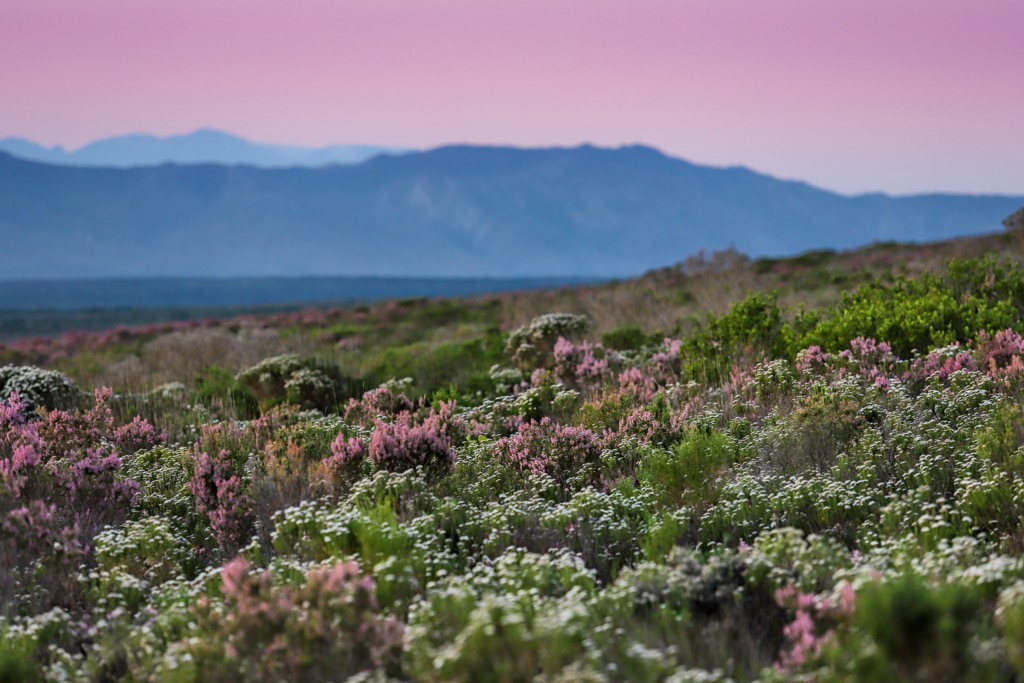
The Western Cape is also ecologically significant because the cold Atlantic meets the tropical Indian Ocean current. This fusion of Oceans is responsible partly for Cape Town’s classically Mediterranean climate of hot, arid summers and temperate, damp winters, providing a nurturing environment for its botanical fiefdom.
Not only is this climate the most sought-after on Earth, but it is also one of the rarest. The western Cape of South Africa is one of the few places in the world featuring this rare ecosystem. Outside of the Mediterranean Sea, only the coasts of California, Chile, southwestern Australia, and the Western Cape boast a Mediterranean climate.
In the southernmost region of Table Mountain National Park is the Cape of Good Hope, a historically significant promontory offering an iconic backdrop of rugged cliffs meeting the expanse of two oceans, the Atlantic and Indian.
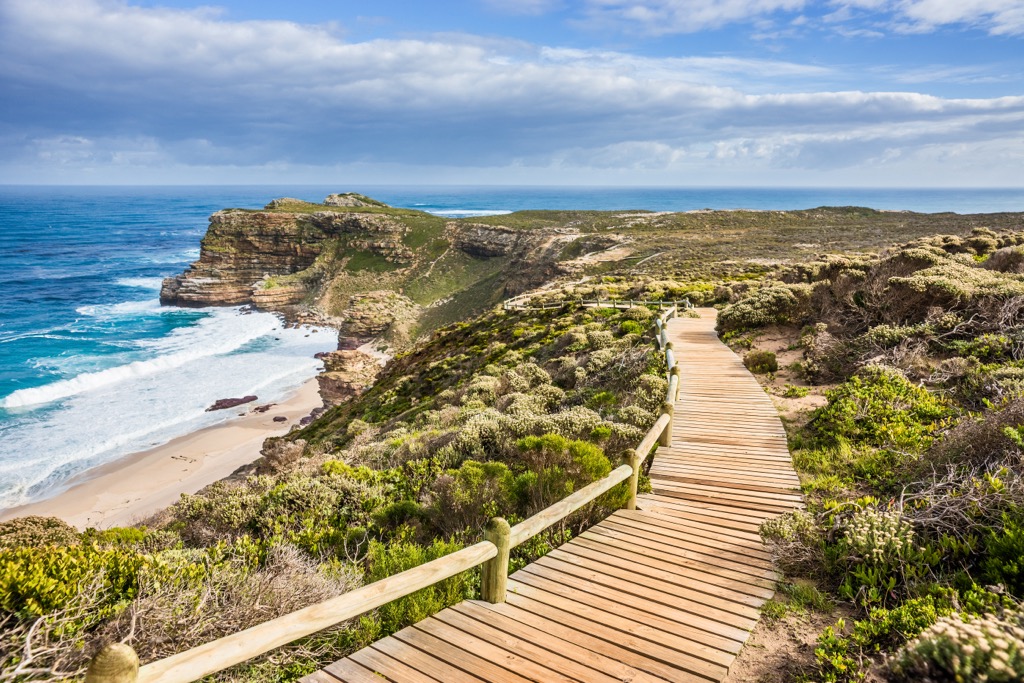
Along this peninsula, the park's geography extends into the marine environment, encompassing the coastline and azure waters of the Atlantic. The cold Benguela Current, which sweeps along the western coast of South Africa, influences the marine ecology and contributes to the rich diversity of species found in the waters surrounding the park.
Table Mountain National Park’s peaks form part of the Cape Fold Belt, a series of folded and faulted rock layers formed around 300 million years ago during the collision of tectonic plates. These formations are primarily composed of an amalgamation of rocks, including sandstone, shale, and quartzite. The sedimentary rock layers in the park today represent a rich geological history dating back to the late Paleozoic Era.
Over millions of years, erosion has significantly shaped the mountains of Table Mountain National Park. The forces of wind, water, and ice have gradually sculpted the landscape, creating deep gorges, ravines, and distinctive rock formations.

Forming part of South Africa’s Cape Floristic Region, Table Mountain National Park boasts a rich diversity of rare and endemic plants. Fynbos and renosterveld are among the dominant ecoregions thriving here.
One remarkable plant species in the fynbos is the King Protea, the country’s national flower. Other notable plants are ericas, restios, and geophyte bulbs. Fynbos relies on natural brush fires to renew and enhance its growth every 15 years; otherwise, it could risk collapse.
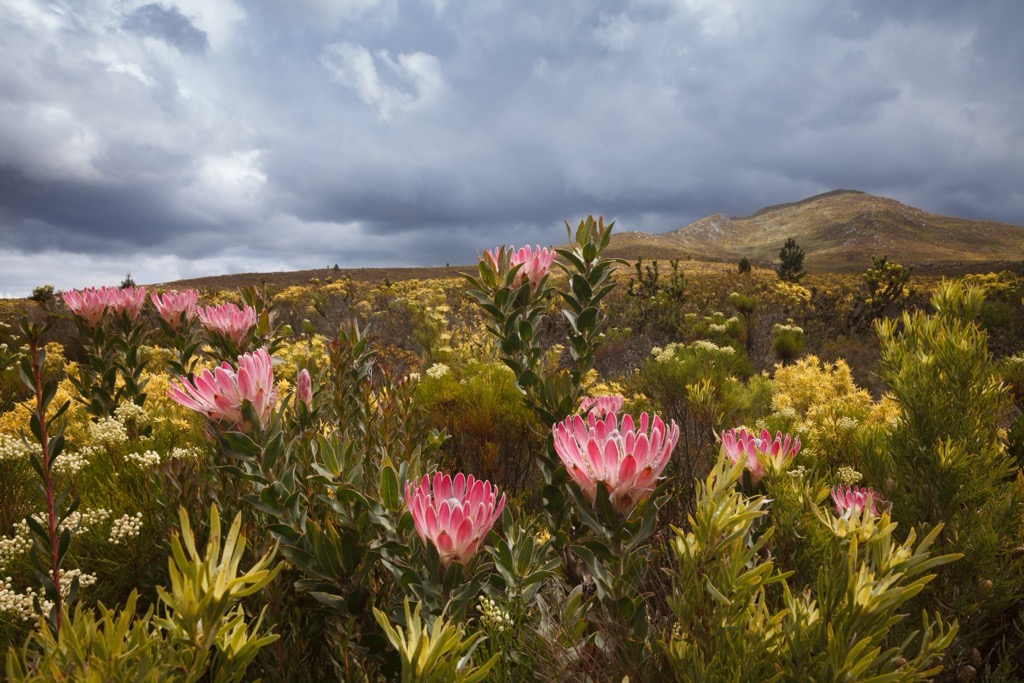
Like fynbos, the existence of renosterveld relies on the frequency of fires. Renosterveld is another important ecoregion characterized by its rich biodiversity, consisting of shrubs, bulbs, and succulents.
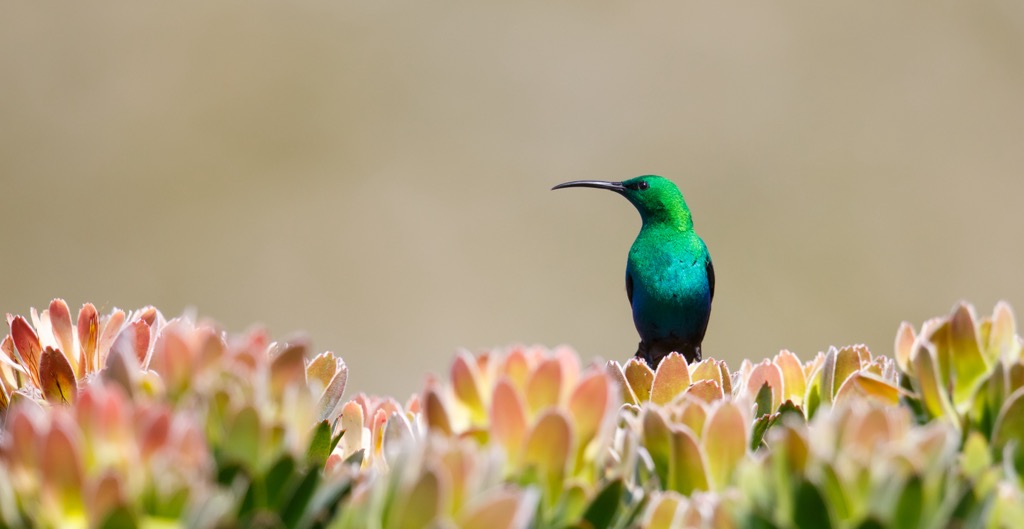
Coastal stretches within Table Mountain National Park are home to unique plant species adapted to the harsh conditions of the salt-laden air and shifting sands. Coastal vegetation includes hardy species like beach salvia, coastal dune salvia, and various succulents adapted to the coastal environment.
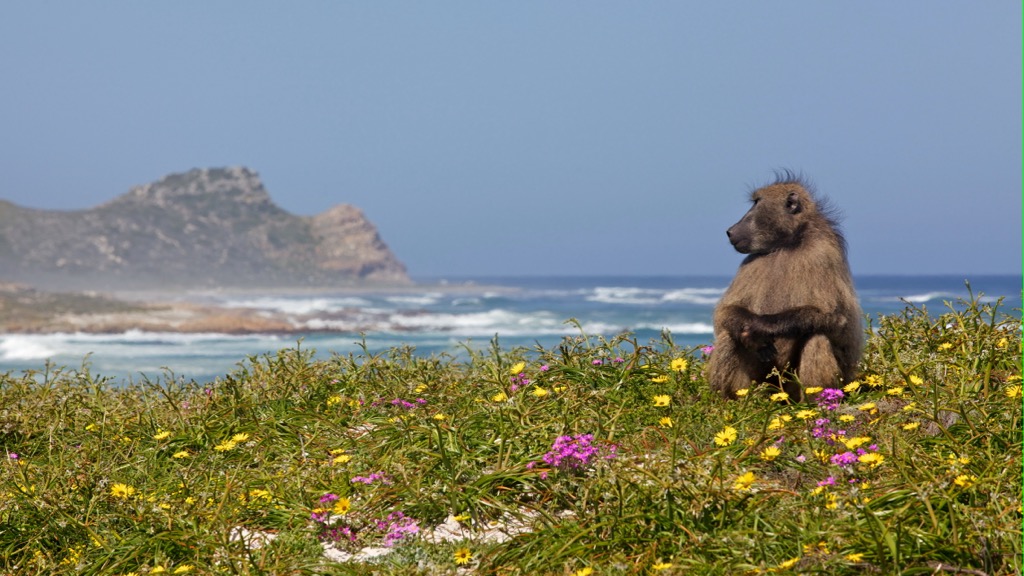
Just as the flora showcases diversity, so does the park’s wildlife. Table Mountain National Park is home to many animal species, including small mammals like the Cape mountain zebra, chacma baboon, and caracal, as well as a diverse range of bird species, such as the Cape sugarbird and African penguin. Marine life is abundant off the park's coastline, with robust populations of seals, dolphins, and southern right whales.
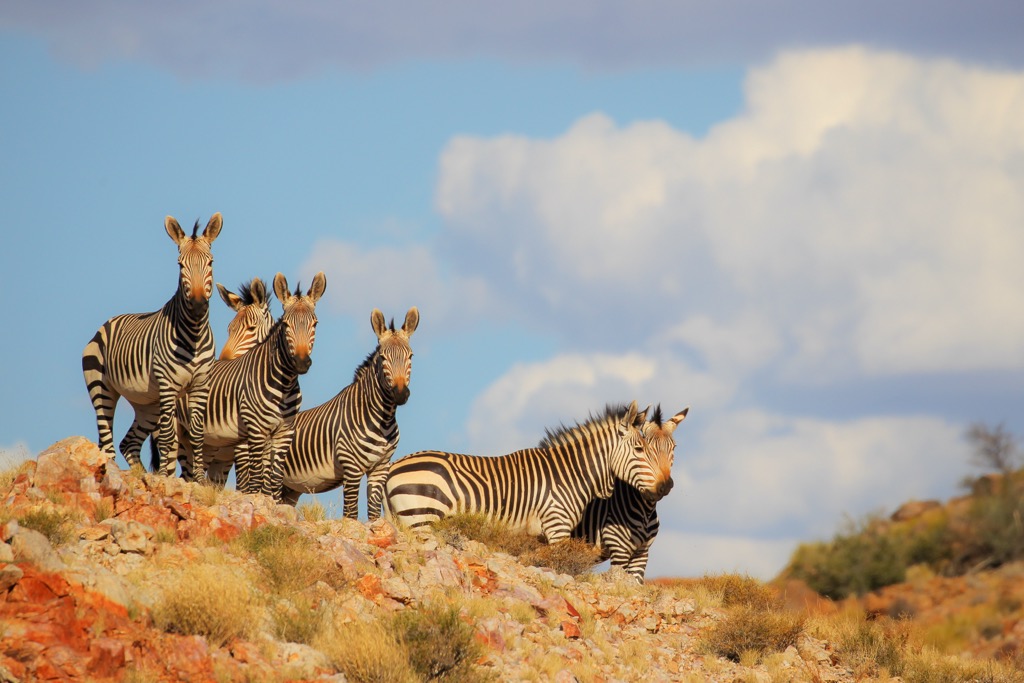
The history of Table Mountain National Park begins with the indigenous peoples who have lived in the area for millions of years. Most of the history of humanity consists of the stories of prehistoric bushmen who evolved on this continent. However, the most recent indigenous peoples are the San and Khoikhoi, whose roots stretch back millennia.
During the Middle Ages in 1488, the arrival of Portuguese explorer Bartolomeu Dias marked a significant turning point in the history of the Cape. Dutch settlers later began colonizing parts of the island. In 1652, the Dutch East India Company established a supply station at the Cape of Good Hope, laying the groundwork for Cape Town's development.
It’s impossible to ignore the systemic racism that has been South Africa’s signature since its inception. South Africa is likely the most racist country on Earth, at least throughout history. Apartheid split the country along racial lines despite almost unanimous condemnation among world leaders. Today, South Africans of any race still require a visa to travel to most countries, and it is not always forthcoming. Since the dissolution of apartheid, racial and economic disparity has continued, corruption is rampant, and crime is a serious problem.
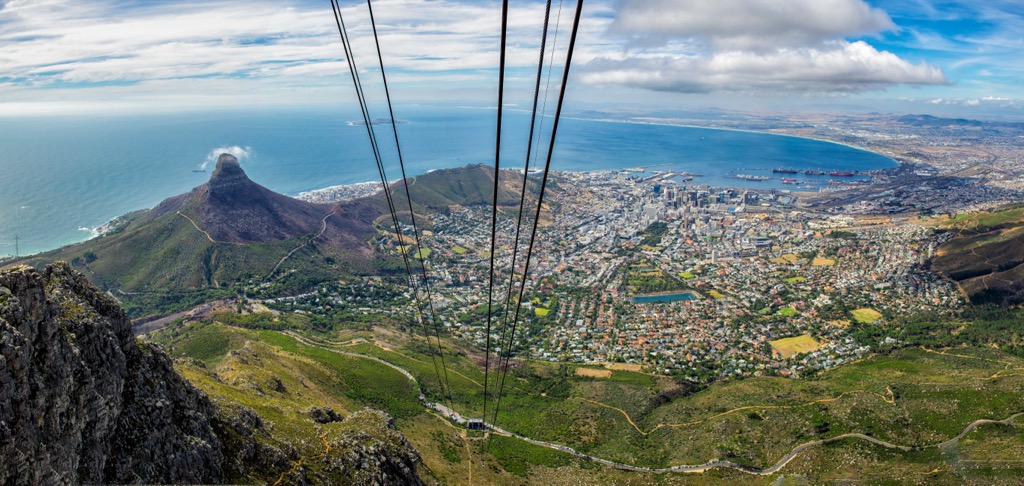
As Cape Town grew, concerns over the preservation of its unique natural beauty and biodiversity began to emerge. In the late 19th and early 20th centuries, efforts to protect and conserve the area gained momentum. These efforts culminated in the establishment of Table Mountain National Park.
In 1998, Table Mountain National Park was officially declared a national park, incorporating the previously separate Table Mountain and Cape of Good Hope nature reserves. Despite its protected status, Table Mountain National Park faces ongoing challenges such as invasive species, urban development pressures, and the potential impacts of climate change.
Explore these desirable trails and sought-after areas when visiting Table Mountain National Park:
This renowned trail is popular for those seeking a relatively moderate yet rewarding hike. Situated between Table Mountain and Signal Hill, this distinctive peak is recognizable by its proud stature, like that of a lion.
Unlike the cable car-accessible Table Mountain, Lion's Head Walk requires you to earn panoramic views through a moderately challenging 5 km (3 mi) hike. Though not overwhelmingly difficult, the trail features steep segments that might get your heart pumping. If you’re seeking a more relaxed outing, an alternative path awaits at the mountain's base.
One of Lion's Head’s primary draws is its exceptional vistas along the way and at its summit. As you ascend, the sprawling cityscape of Cape Town unfolds, framed by the sparkling waters of the Atlantic Ocean and the distant outline of Table Mountain. The summit presents a breathtaking 360-degree spectacle of Cape Town's urban landscape and the ocean beyond.
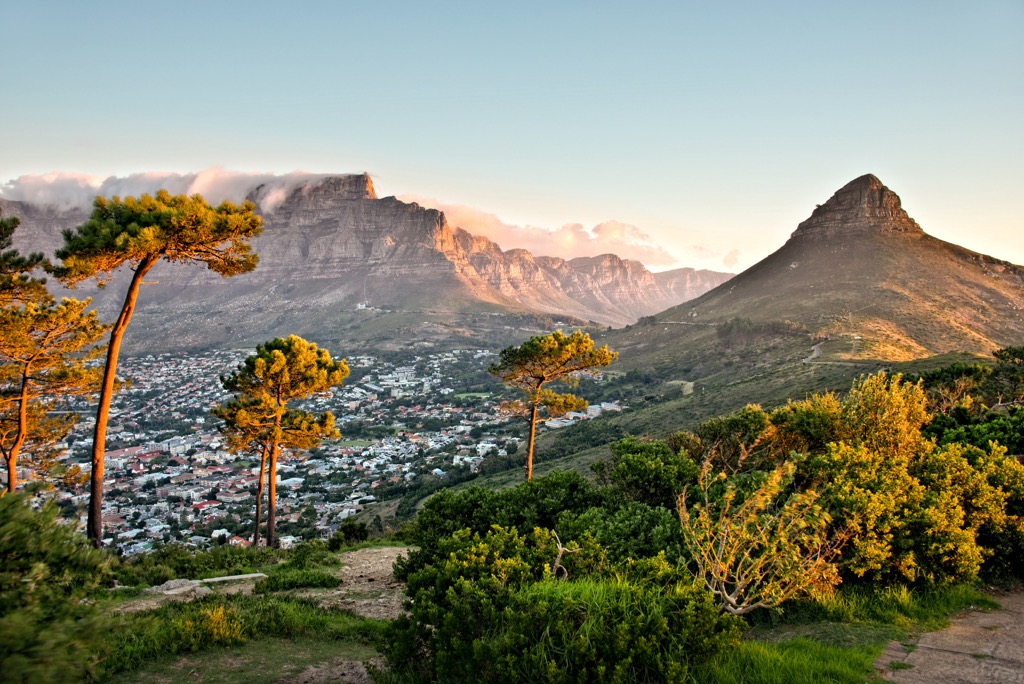
The Plattekip Gorge provides a straightforward yet challenging path to Table Mountain’s summit. The trailhead is easily accessible from the Table Mountain Cable Car station.
Although only 2.2 km (1.4 mi) long, Platteklip Gorge offers a short but steep climb. Be prepared to encounter strenuous uphill ascents with some sections that require scrambling over rocks and boulders. However, you won’t climb Platteklip Gorge in vain.
One of the highlights of this hike is the spectacular scenery along the way. As you ascend, you'll be treated to breathtaking vistas of Cape Town, Lion's Head, Signal Hill, and the Atlantic Ocean. The hike also offers opportunities to witness the endemic flora and fauna of the Fynbos ecoregion. If you’re exhausted from the climb or want to save your knees, you can descend via the Table Mountain Cable Car without tackling the steep, downhill hike.
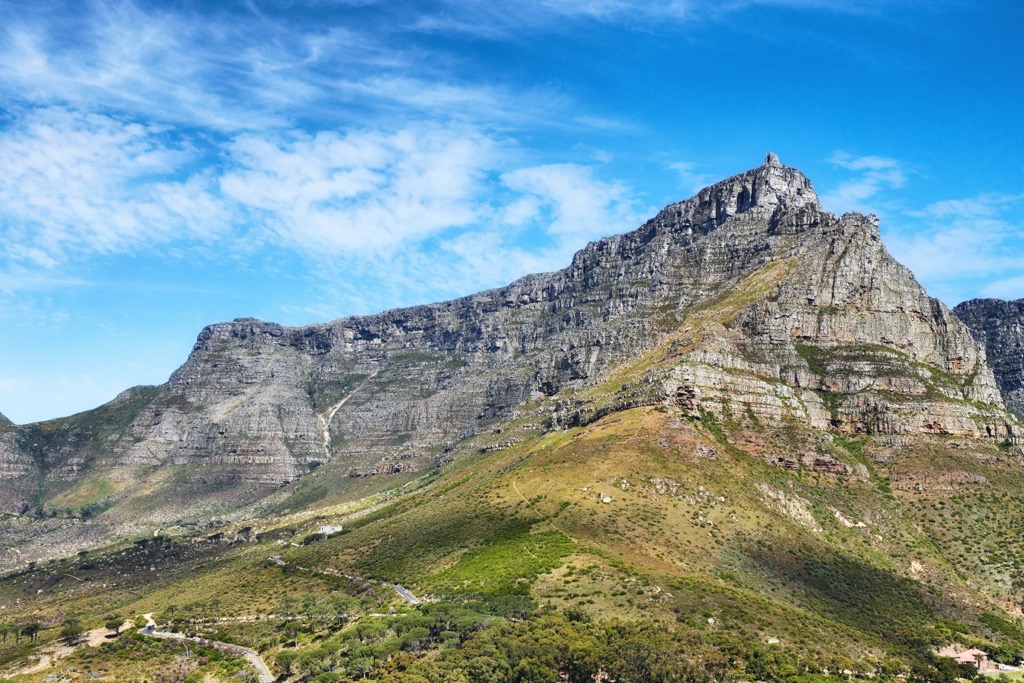
Another route that leads you to Cape Town’s flat-topped peak is Skeleton Gorge. The scenic path, known for its dense, lush foliage, starts at Kirstenbosch National Botanical Garden, where an entrance fee is required to access the start.
While less demanding than Platteklip Gorge, Skeleton Gorge has challenges, such as a steep and rocky ascent through a verdant indigenous afromontane forest of yellowwoods and stinkwoods. A section involves climbing down a wooden ladder attached to an uneven slope with loose boulders beneath.
While foliage shades most of the 3.5 km (2 mi) path, the view opens near Table Mountain’s summit. From here, you’ll have awe-inspiring panoramic views of Cape Town, the Atlantic Ocean, and the surrounding landscape. From here, you can descend via several routes, depending on your preferences and fitness level. These routes include the Smuts Track, Nursery Ravine, and the popular Platteklip Gorge.
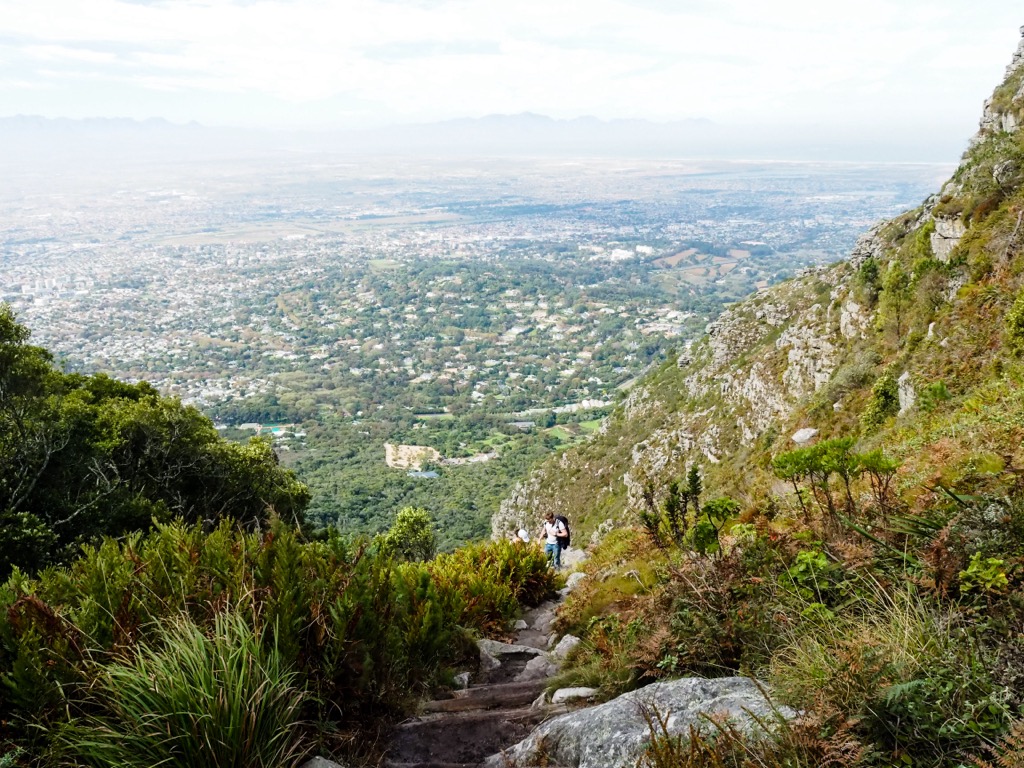
Located at the eastern foot of the iconic Table Mountain, Kirstenbosch Botanical Garden is a treasure trove of diverse, endemic flora and offers an opportunity to explore the natural beauty and biodiversity of the Cape Floral Kingdom.
Nature lovers celebrate Kirstenbosch for its remarkable collection of indigenous South African plants, many rare and endangered. The garden showcases over 7,000 species of plants from the Fynbos and Renosterveld ecoregions.
One of the garden's prominent features is the Centenary Tree Canopy Walkway, also known as Boomslang, a South African snake. This elevated walkway allows you to explore the garden's upper reaches, providing views of the garden and its surroundings, including the sprawling city of Cape Town.
Other notable areas of interest are the unique fynbos and protea gardens, a stunning sculpture garden of indigenous plants, a cycad amphitheater, and a medicinal garden. In addition, Kirstenbosch has several hiking trails leading to Table Mountain National Park.
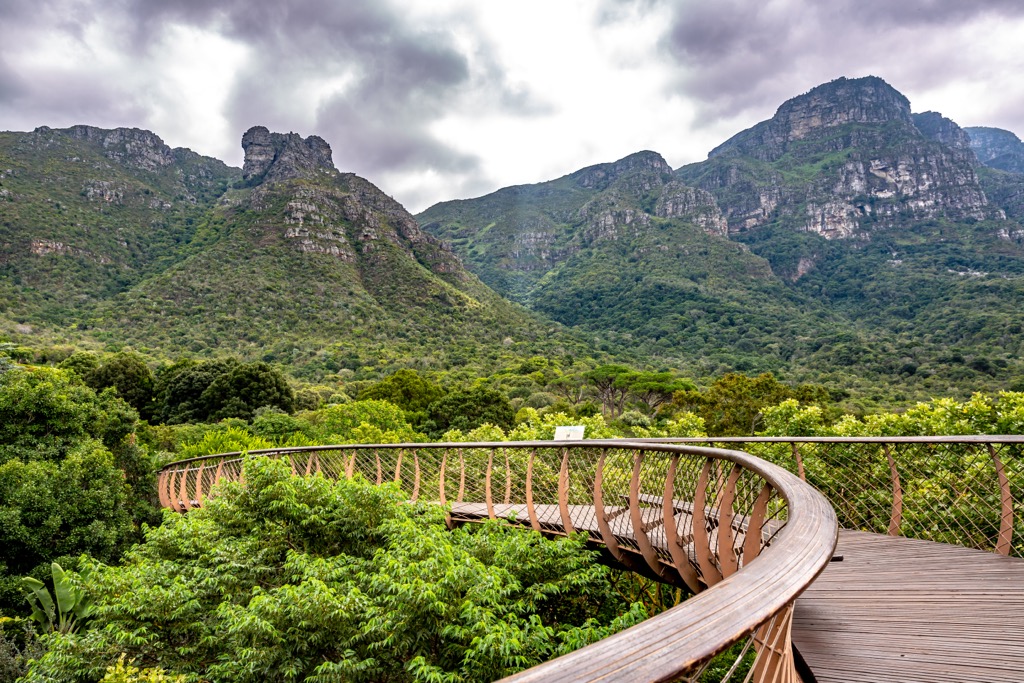
The southern tip of the Cape Peninsula is an iconic destination where the Atlantic and Indian oceans meet. Characterized by rugged cliffs, pristine beaches, and the mighty waves of the converging oceans, it attracts many hikers and outdoor enthusiasts.
Two particular trails are popular hiking routes in the Cape of Good Hope. The Cape Point Trail offers an adventure through fynbos-covered terrain, encounters with various local wildlife, such as dassies and antelope, and views of dramatic cliffs and the iconic Cape Point lighthouse.
On the other hand, the relatively short 3 km (1.8 mi) Shipwreck Trail allows you to explore historic shipwrecks along the coastline. It's an excellent option for those interested in maritime history and striking landscapes rather than distance and elevation gain.
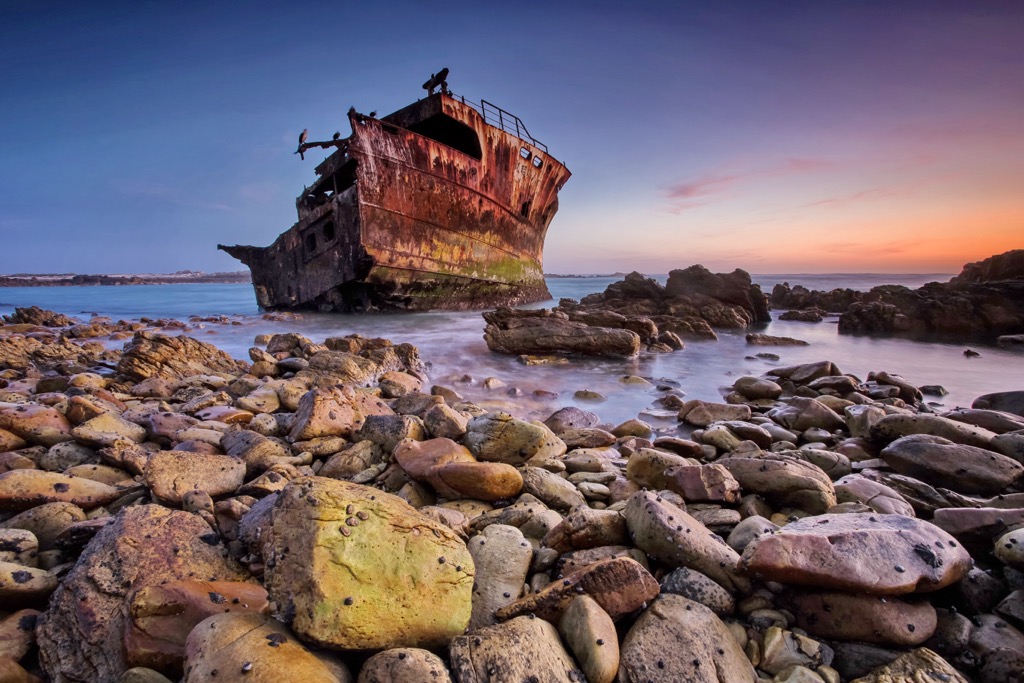
Boulders Beach, a renowned shoreline inhabited by a colony of African penguins, is north of the Cape of Good Hope. These endangered birds are on the verge of extinction, and Boulders Beach is one of the only places along the South African coastline where you can witness these waddling creatures.
Boulders Beach plays a crucial role in penguin conservation efforts, offering a safe breeding ground and a place where these endangered birds can thrive. While the penguins are the main attractions, the beach features golden sands, clear blue waters, and smooth granite boulders that form sheltered caves.
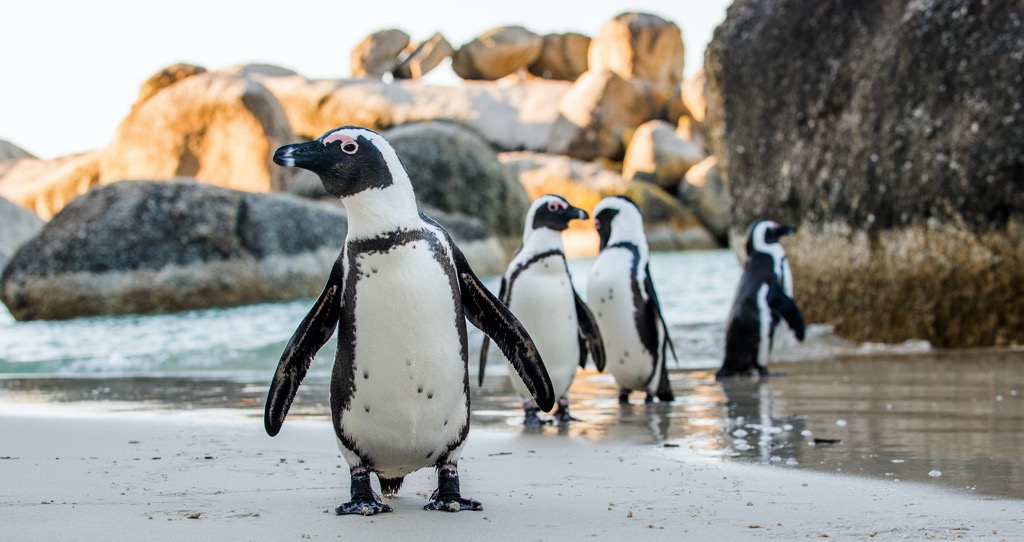
Cape Town and Stellenbosh are the two cities worth checking out during a visit to the Western Cape. Both are known for their natural beauty; one on the coast and the other in the sprawling and picturesque Winelands. While Cape Town is a vibrant and faced-paced urban center, Stellenbosch offers a more relaxed vibe.
Cape Town is one of South Africa’s three capitals and frequently tops the charts for one of the most beautiful cities in the world. This coastal powerhouse has stunning landscapes, diverse cultures, thrilling adventures, and a rich history. Whether you're a nature lover, a culture enthusiast, or an adrenaline junkie, Cape Town offers an experience that will stay with you long after you've left its shores.
Located against the stunning backdrop of Table Mountain and the Atlantic Ocean, the Victoria & Alfred Waterfront is an iconic attraction offering shopping, dining, and entertainment amenities and sea and mountain views. Named after Queen Victoria and her son Prince Alfred, the waterfront has transformed from a historic harbor into a bustling marina where you can board boats to visit Robben Island, where Nelson Mandela was held prisoner for 27 years.
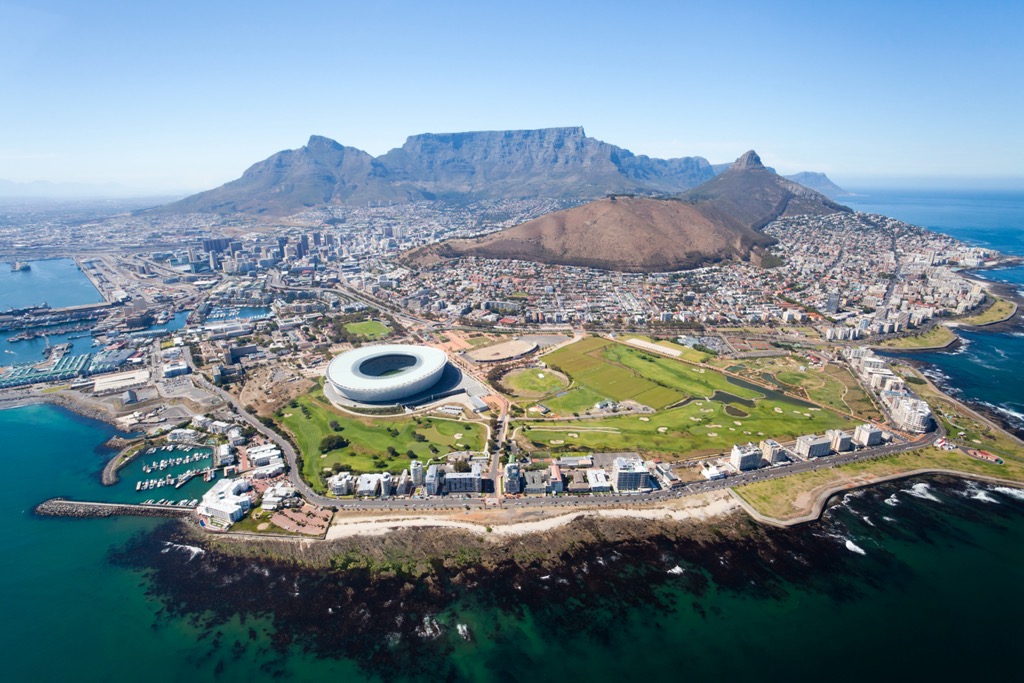
For those who can’t get away from hiking, Signal Hill is among Cape Town’s most popular peaks. Located next to Lion’s Head, Signal Hill is the closest to Cape Town’s city center, offering unrivaled sunset views from its summit. Many people gather on the slopes in the evenings to witness the spectacular sunset over the Atlantic Ocean.
While Cape Town’s beaches aren’t the warmest in South Africa, they’re undoubtedly the most beautiful. Camps Bay Beach is only 10 minutes from Cape Town’s city center. The majestic Twelve Apostles mountains contrast the beach's sandy expanse and create an unforgettable backdrop, especially during sunrise and sunset.
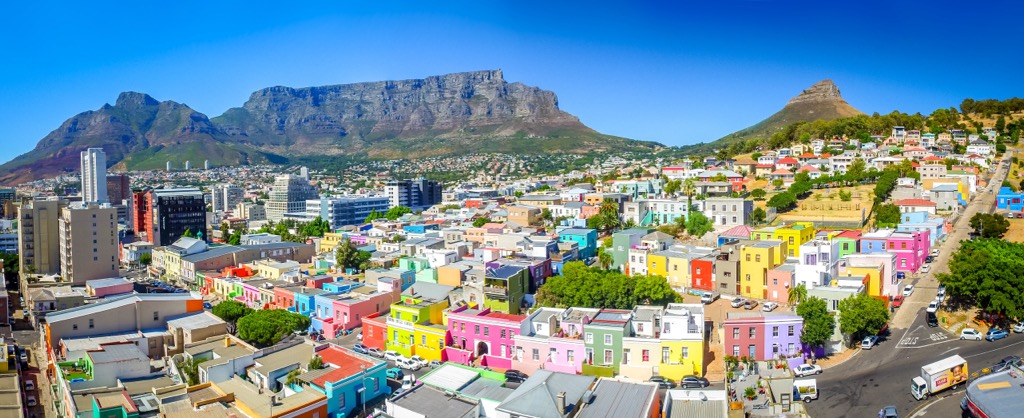
Unfortunately, Cape Town is not entirely an idyllic utopia. South Africa has a long and complex history of racism and inequality, and Cape Town is ground zero. In addition to the contrast of the azure ocean with the Fynbos-ladden mountains, it’s impossible to ignore the disparity between stately, gated homes with hopeless shanty towns around the city’s outskirts.
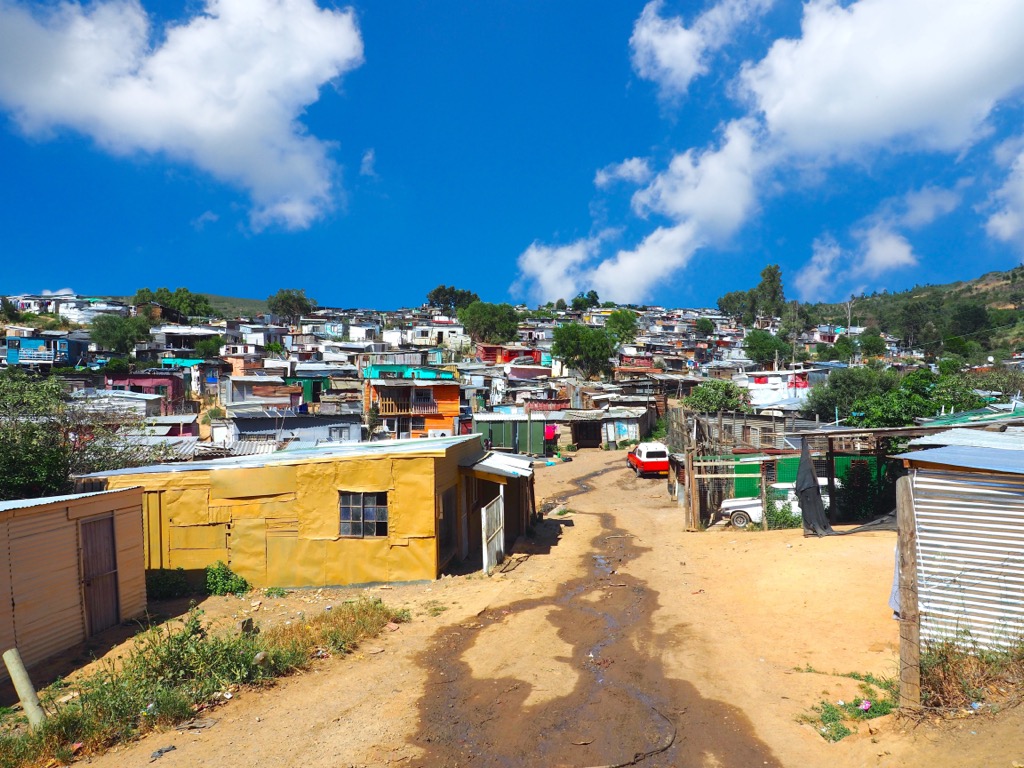
Dutch-descended whites stole the land comprising South Africa by force and, for centuries, subjugated all people of color. The draconian policies of apartheid continued in the 1990s, even as leaders worldwide shunned South Africa. Although apartheid was overturned, systemic racism and corruption still dominate the country. Cape Town is one of the most dangerous cities in the world, with 3,000 homicides among its 5 million residents. Only Rio de Janeiro regularly has more total murders, and Cape Town ranks in the top ten worldwide for murders per capita (~65).
Crime against tourists is generally low, and many people agree that Cape Town’s natural beauty and electrifying culture make it worth the risk. But you do have to be careful; don’t venture too far at night, don’t carry much money on you, and don’t carry your passport.
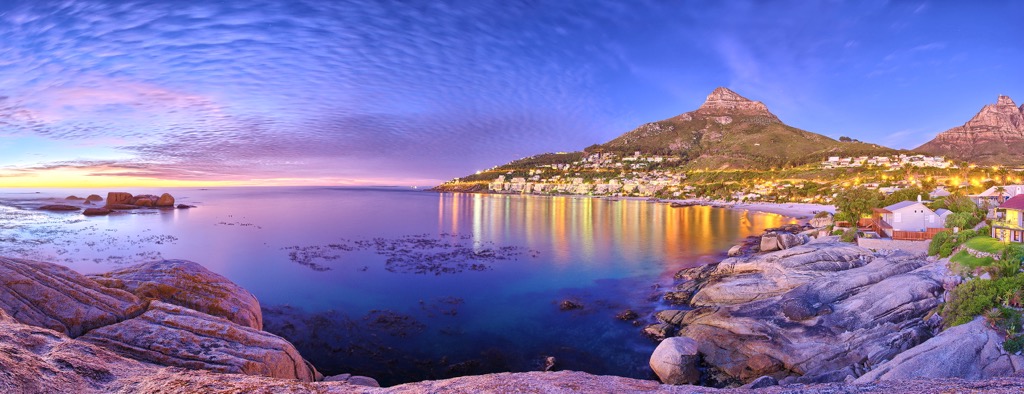
Stellenbosch is a picturesque town located in the Western Cape province. Founded in 1679 by Dutch settlers, Stellenbosch is one of the oldest towns in South Africa and exudes a blend of old-world charm, modern vibrancy, and university-town intellectualism. Stellenbosch is perched in the heart of the Cape Winelands region and is surrounded by rolling vineyards and some of South Africa's finest wineries.
Jondershoek Nature Reserve covers 9,800 ha (24,216 a) of rugged mountains and biodiversity. The reserve encompasses many ecosystems, from fynbos-covered mountains to lush forests, and is a haven for hikers, cyclists, and birdwatchers. Jonkershoek Nature Reserve offers a network of well-maintained hiking trails suitable for all levels.
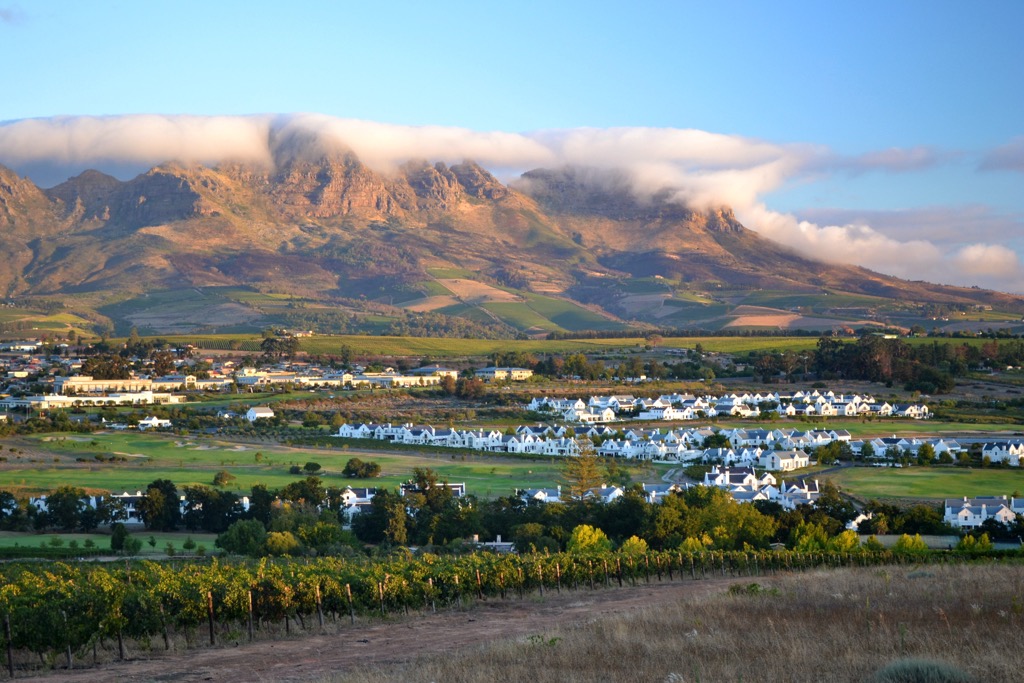
For a well-deserved tipple after your hike, visit the verdant winelands of Franschhoek. French Huguenot settlers fleeing religious persecution established these vineyards in the late 17th century. They brought their winemaking expertise and laid the foundation for the region's renowned wine industry. Often referred to as the food and wine capital of South Africa, at Franschhoek, you’ll enjoy wine tastings and cellar tours while surrounded by charming vineyards and dramatic mountain backdrops.
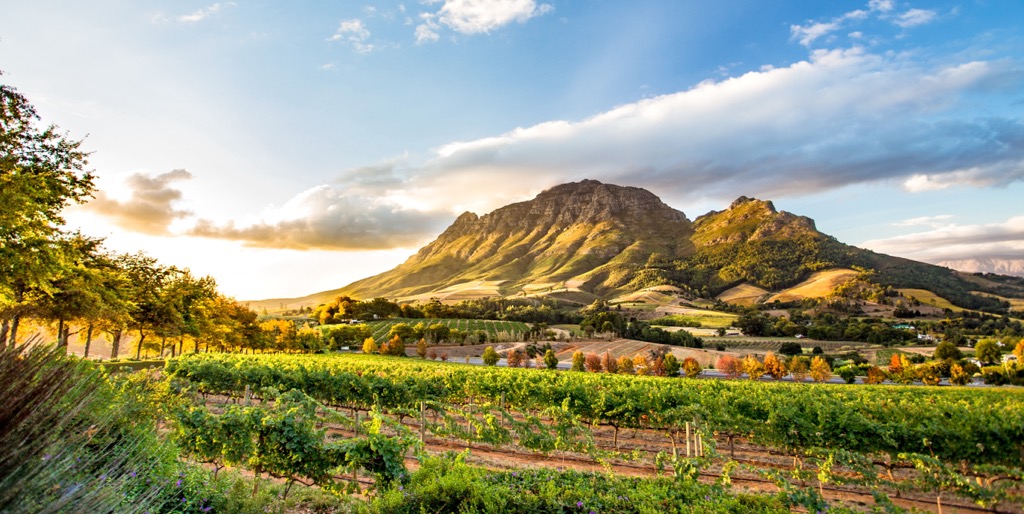
The Stellenbosch University Botanical Gardens are South Africa’s oldest, established in 1922. The garden is a living laboratory that showcases a remarkable array of plants, from indigenous flora, cycads, medicinal plants, and succulents.
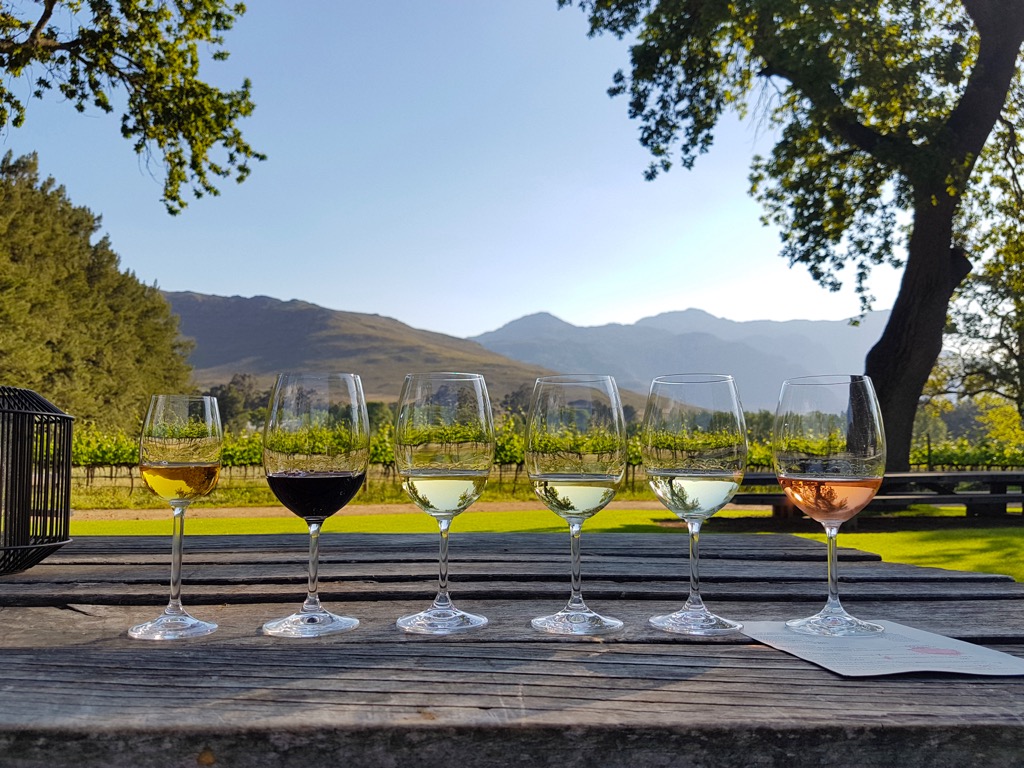
The best way to reach Table Mountain National Park involves driving a hired vehicle. It’s exceptionally cheap to rent a car here by Western standards.
However, there are also ways to get there with public transport. If you want to hike the Table Mountains or its nearby hills, you can take a taxi, utilize the MyCiti bus that serves multiple routes within Cape Town or board the metro rail to Cape Town Central Station, a short walk from Signal Hill.
If you want to reach the Cape of Good Hope or Boulders Beach in the south of the park, an option is to take the train from Cape Town Central Station to Kalk Bay, followed by a taxi ride to your final destination. If you drive, the distance between Cape Town and Cape Point is a manageable 64 km (40 mi).
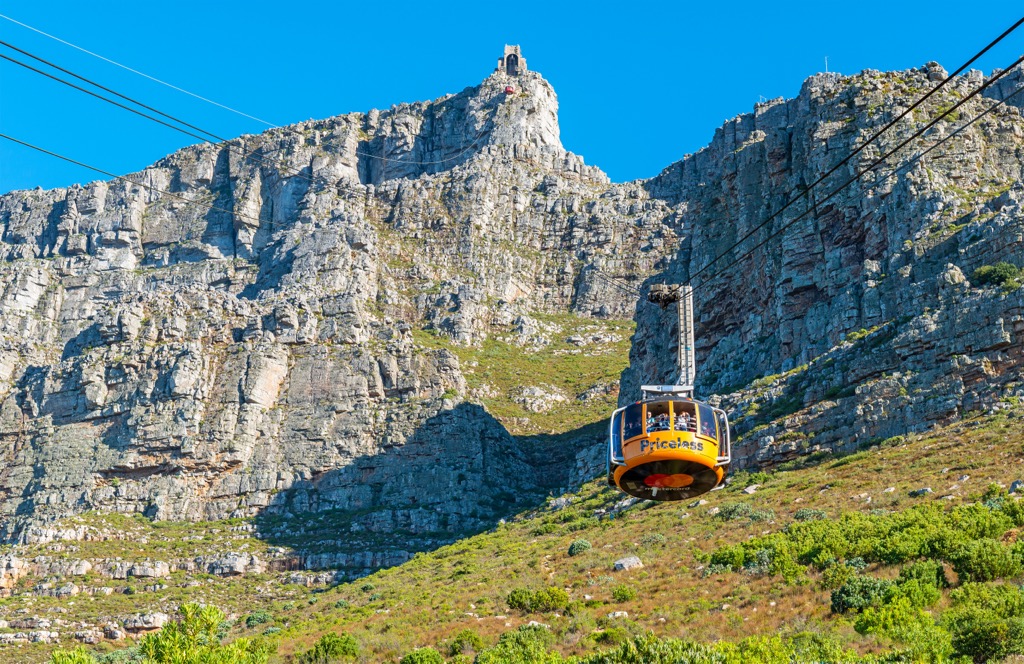
Explore Table Mountain National Park with the PeakVisor 3D Map and identify its summits.

